As much as we try to be thoughtful about our purchasing choices, our decisions are shaped by emotions rather than rational factors. It may not surprise that the recommendations of people we trust—our family and friends—play a crucial role. The clever marketing campaigns, product design, and other strategies implemented by brand strategists can spark curiosity and captivate our minds.
So, what's your first step in unraveling the mind and achieving perfect branding? That is to understand the abstract world of the psychology of branding—a vital foundation for building a successful brand and lasting relationships with customers.
Defining the Psychology of Branding
What is psychology of branding?
The psychology of branding, or branding psychology, is about discovering the secrets of our minds to create a strong brand. It answers questions like - What makes us tick? How do customers perceive different branding elements?
When you think about it, brands are like people, too. They come with characteristics we may or may not like, affecting our brand perception. For instance, a curated set of colors, shapes, tone of voice, and symbols can impact human psychology.
In short, successful brands can make you feel and do something like create desire, capture interest, and leave a lasting impression that drives consumers to purchase and recommend the brand to others. Finally, a strong brand also has a story of where it comes from and how it came to be. This narrative can make your brand more relatable, memorable, and engaging.
It's no wonder businesses strive to be more adept in branding psychology because doing so also helps strengthen a brand's reputation. If you're among them, read on as we dive deep into how the psychology of branding helps customers perceive you. Partnering with a brand strategy development company can help shape this story into a consistent, psychology-driven narrative that strengthens brand reputation.
How Psychology Affects Your Brand's Identity and Value
Give yourself a minute and think about your favorite brands and how they make you feel. What do you feel when you come across a Hallmark card? Sentimental, happy, and nostalgic? How about other famous brands like KFC, Disney, or Nike? Can a small business owner make the same mark?
The most competitive brands know how to weave human psychology into the company's branding strategies. They can create a distinct image and achieve high brand recognition, as can you.
Psychology of Brand Colors
Brand colors are a great example of how branding psychology and brand design intertwine. In brand color psychology, colors correlate to feelings and symbolize cultural influences that—when combined— add depth to the brand message and brand story.
Here are a few examples of how colors impact customer brand perception:
- Red: This color is often associated with the color of our blood, which signifies life. It also represents energy, love, and, interestingly, anger or danger.
- Yellow: This color is a cheerful color that signals hope, a bright tomorrow, and growth. In Chinese culture, yellow is a lucky color believed to bring prosperity.
- Blue: A symbol of peace, trust, and wisdom, this color is the go-to palette of government offices, banks, hospitals, tech companies, and the like.
- Green: A color that is calming and easy on the eyes, green is associated with nature, growth, wealth, and health.
- Pink: This warm and soft color represents feminine and tender energy.
Psychology of Brand Sound
To create a holistic customer experience, brands may also lean on design elements beyond visual aesthetics. Enter sonic branding or branded music, tunes, and commercial jingles that tease the auditory senses. When done right, these little ditties, hums, and rhythms profoundly impact brand recall and re-enforcing your brand's identity. They can also help your brand withstand the test of time and elicit nostalgia.
Just think about Window's iconic audio logo in its early years that plays whenever the computer turns on or off. It's an unmistakable sound forever etched in the minds of Gen X and millennials. And let's not forget about the original voice of Siri, which remains the most memorable iteration—despite the customizable option—to date. That's the magic of branding psychology!
Check out other examples of successful sonic branding below.
Psychology of Brand Font
Yes, fonts can make or break your branding, too! Choosing fonts is more challenging than picking what is visually appealing on paper or screen. A font psychology study suggests that the typeface you opt for can shape brand perception and the overall message you convey. With this in mind, strong brands go to great lengths to customize fonts that represent them.
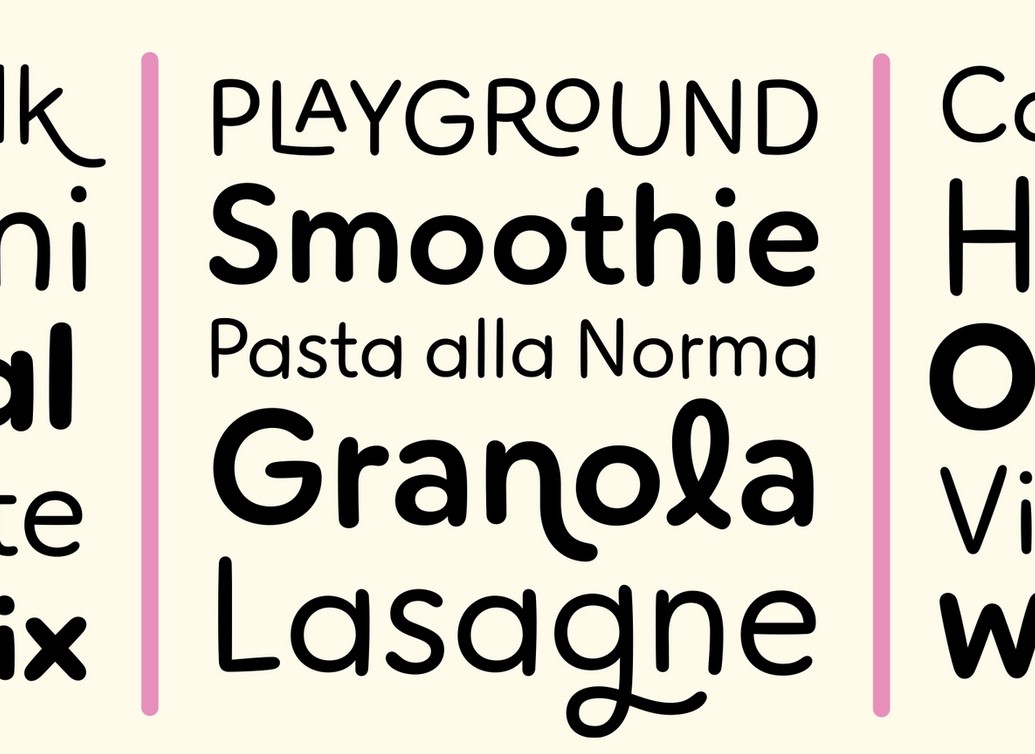
Your font choice can affect how you convey your brand message. Image via Dribbble
For brands targeting a younger audience, you'll see them using sans-serif and decorative typefaces. These fonts exude modernity, playfulness, and creativity that allude to the youth. The absence of serifs in sans-serif fonts also gives them a clean appearance, which aligns with the minimalist design trend of today.
On the other hand, decorative typefaces can evoke a sense of uniqueness and individuality, appealing to the desire for self-expression. Fonts convey emotional undertones, similar to when you're adding an emoji to your text messages. If you want a more elegant and sophisticated vibe, you'll benefit from script fonts often used for luxury brands.
Again, aligning your fonts with your brand's values and personality ensures clarity and connection with your target audience.
Psychology of Brand Messaging
Ever heard the saying: "It's not what you say, it's how you say it"? Simple as it may sound, there is no one-size-fits-all when crafting a compelling brand message. This is because every target audience is different. That said, it is vital to create a more profound connection by understanding their interests and values. What motivates them? And what's their communication style online?
Remember to keep your message concise and clear. Avoid jargon or complex terms that may confuse your audience. Instead, focus on simple language that tickles the mind. For example, millennials may be more receptive to brands that use slang than formal words. Doing so gives off a friendly and welcoming vibe that encourages them to interact.
Leveraging scarcity in your messaging also activates the FOMO (Fear of Missing Out), eventually pushing a purchase. Finally, the quality of your messaging directly impacts your brand's reputation.
Psychology of Brand Logo Design
A logo establishes a highly recognizable brand and consistent customer experience. But its value is not determined by how much you have spent on it—whether a dollar or thousands of dollars. A strong brand logo's effectiveness lies in how it can differentiate you from your competitors, command attention, convey a sense of quality and your brand identity, and its emotional appeal. It's a culmination of all visual elements mentioned above, including your choice of name.
Here's a checklist of what to consider when choosing a name for your brand logo:
- Is it simple and memorable? Your logo name should roll off the tongue easily if you want it to be remembered. It should also be catchy, concise, and distinctive.
- How relevant is it to your brand? Sure, you can be extra creative in developing your brand's name, but how does it relate to your brand's authenticity?
- Can everyone pronounce it? If you want to expand globally, stick with a name with pleasing phonetics.
But aside from understanding branding design psychology, we must realize how it affects the self-perception of customers.
How a Brand Relates to Self-Perception
One characteristic of a strong brand is its ability to shape and influence a person's self-expression of their lifestyle. Think how some of us are drawn toward luxury brands to elevate ourselves in society. You don't buy a Chanel purse for its practical use but as a self-expression of appreciating finer things in life. The image you project also helps attract like-minded people.
Marketing and branding experts anchor this concept of self-perception to understand their market and explore opportunities. This is crucial in a crowded market where uniqueness is vital in honing a positive brand perception.
Behavioral marketing is among the effective branding strategies where consumer trends and behaviors are considered when creating ads. By understanding the needs and desires of a customer, a brand can tailor its marketing materials to provide a more relevant and engaging experience.
Another important aspect of branding is having a compelling story about their products and services. And the more authentic a brand story is, the stronger the emotional connection with the audience it creates. This connection builds trust and brand loyalty, leading to long-term customer relationships.
Enhancing Customer Relationships Through Brand Psychology
The relationship between brands and consumers is now more than just transactional. When you think about it, they shape each other's existence like two peas in pods, creating a beautiful symbiotic relationship, positive brand perception, and brand loyalty. And that's thanks to the integration of brand psychology.
Let's take the noble edge effect in branding psychology. Consumers are becoming more conscious of the social impact that brands they support make. Hence, brands are developing sustainable options and are actively implementing corporate social responsibilities or CSR projects.
Consumers also tend to support brands that are transparent and vocal about their political leanings and opinions on societal challenges, like gender disparity and the rights of underserved and underrepresented communities.
A brand is not merely a business by understanding its target audience's values, desires, and aspirations. This brand loyalty psychology leads to a relationship that provides a sense of belongingness and a community, shaping the brand's values.
5 Examples of Branding Psychology in Action
Rolex's Timeless Logo
Since its inception in 1905, we still find ourselves captivated by the allure of Rolex. It is, after all, a watch that signifies exclusivity, achievement, and a feeling of success. With its cadmium green text in Garamond, it evokes sleekness and sophistication.
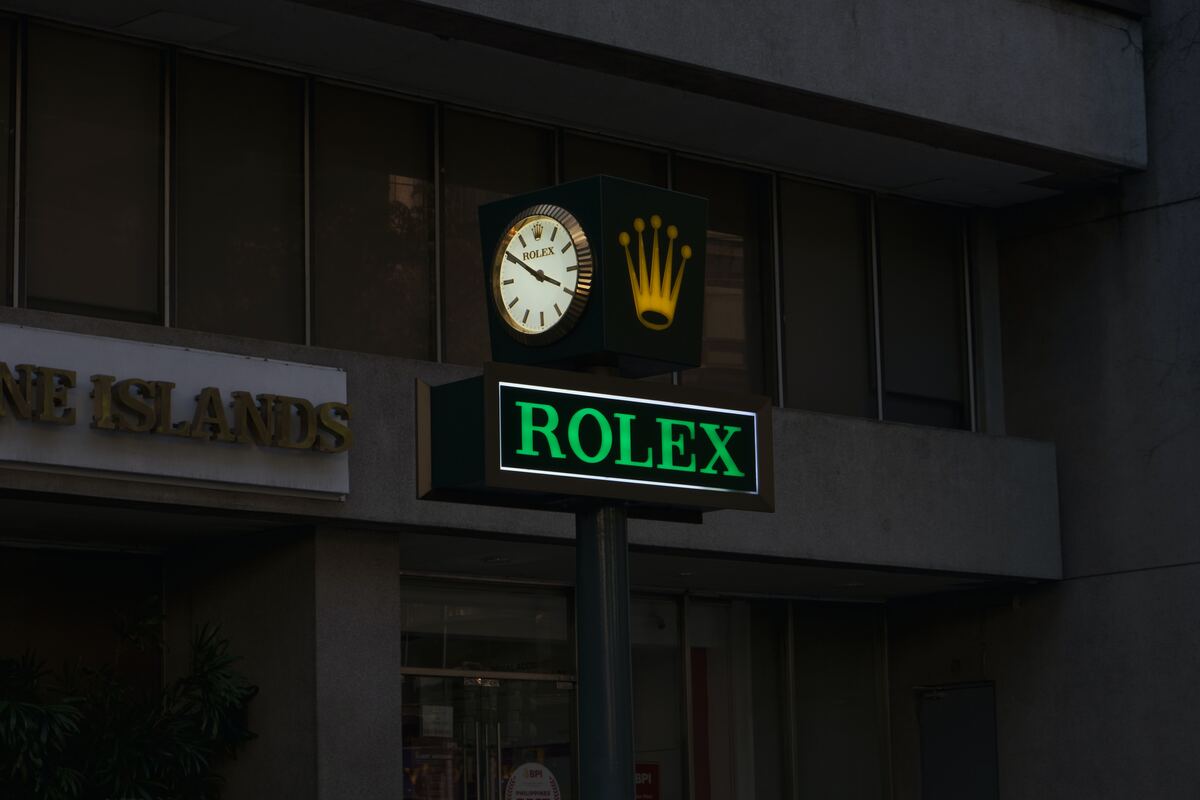
Rolex's iconic logo via Unsplash
Completed with a five-pointed crown in gold, the logo design symbolizes power and prestige. But it doesn't end there. The craftsmanship of each piece, leveraging cutting-edge design, makes Rolex owners feel like royalty. This deep understanding of the powerful connections in branding psychology makes Rolex a timeless brand we can trust.
Heinz' EZ Colorful Ketchup
In the early 2000s, Heinz added a splash of color to the usual red ketchup we're all familiar with. They unveiled their first-ever green ketchup called Heinz EZ Squirt, which was an instant hit among kids.
Taking the growing interest to the next level, Heinz partnered up with Shrek by releasing its limited-edition Shrek-themed green ketchup. Soon enough, they added other colors like orange, pink, and purple.
Albeit its short stint in the market as its novelty wore off, the campaign proved how a simple application of brand color psychology could create a fun and memorable experience for everyone.
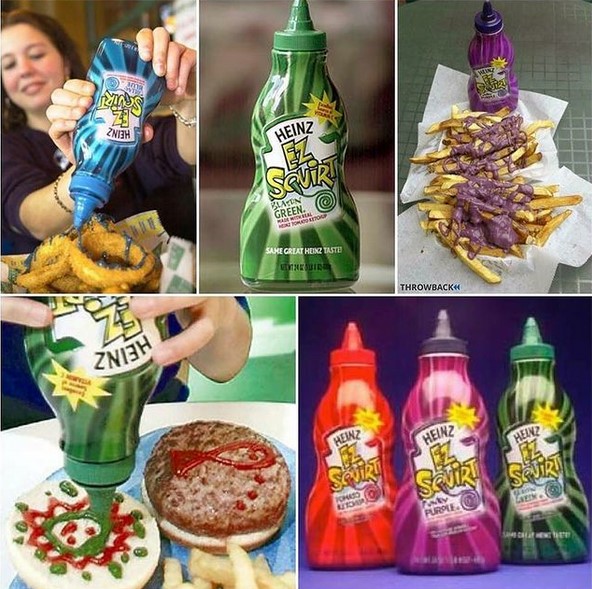
Heinz captured the hearts of kids with its colorful ketchup. Image via Instagram
Starbucks' Limited Edition Seasonal Drinks
Every year, Starbucks has its patrons abuzz with its seasonal drinks. You have Gingerbread Latte, Pumpkin Spice Latte, Cloud Macchiato, and Unicorn Frappuccino, among others. However, the latter is the most popular since its launch in 2017.
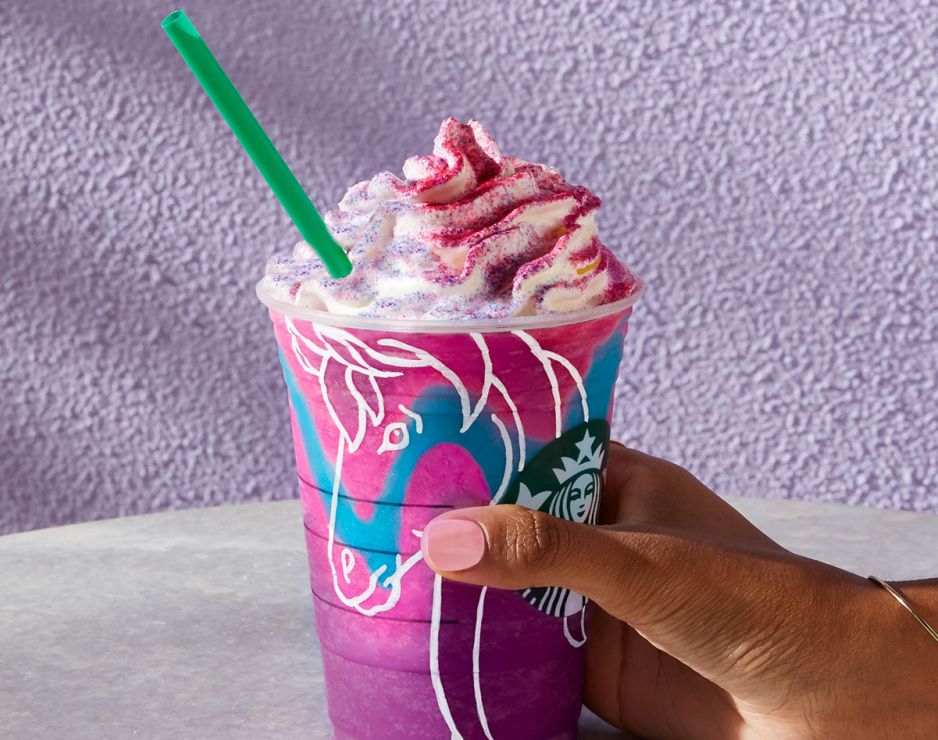
Starbucks' Unicorn Frappuccino caused excitement among its patrons. Image via Starbucks
A drink that boasts a mesmerizing blend of pink and purple, the concoction became a hit as sharing food and drink photos was starting to flex on social media. Hashtags #unicornfrappuccino and #unicornstarbucks dominated Facebook and Instagram. After the promotion passed, many resorted to replicating the drink. Suffice it to say that Starbucks successfully tapped scarcity to stir excitement and curiosity.
Duolingo's Passive Aggressive Owl
One of the key strengths of the language learning app Duolingo is its use of gamification. At each level, users earn points and rewards, tapping into the innate desire of users to compete with each other.
But Duolingo took brand psychology further to attract potential customers and motivate existing users through push notifications. Or, more specifically, delivering passive-aggressive messages on the app.
Over the years, Duolingo's owl mascot has become an internet sensation, captivating users with its distinctive blend of charm and comedic sass. Just take a look at these notifications and ads below.

Screenshot of a Duolingo user's notification. Image via Reddit

Duolingo's Lily takes over when the owl is on a break. Image via Reddit
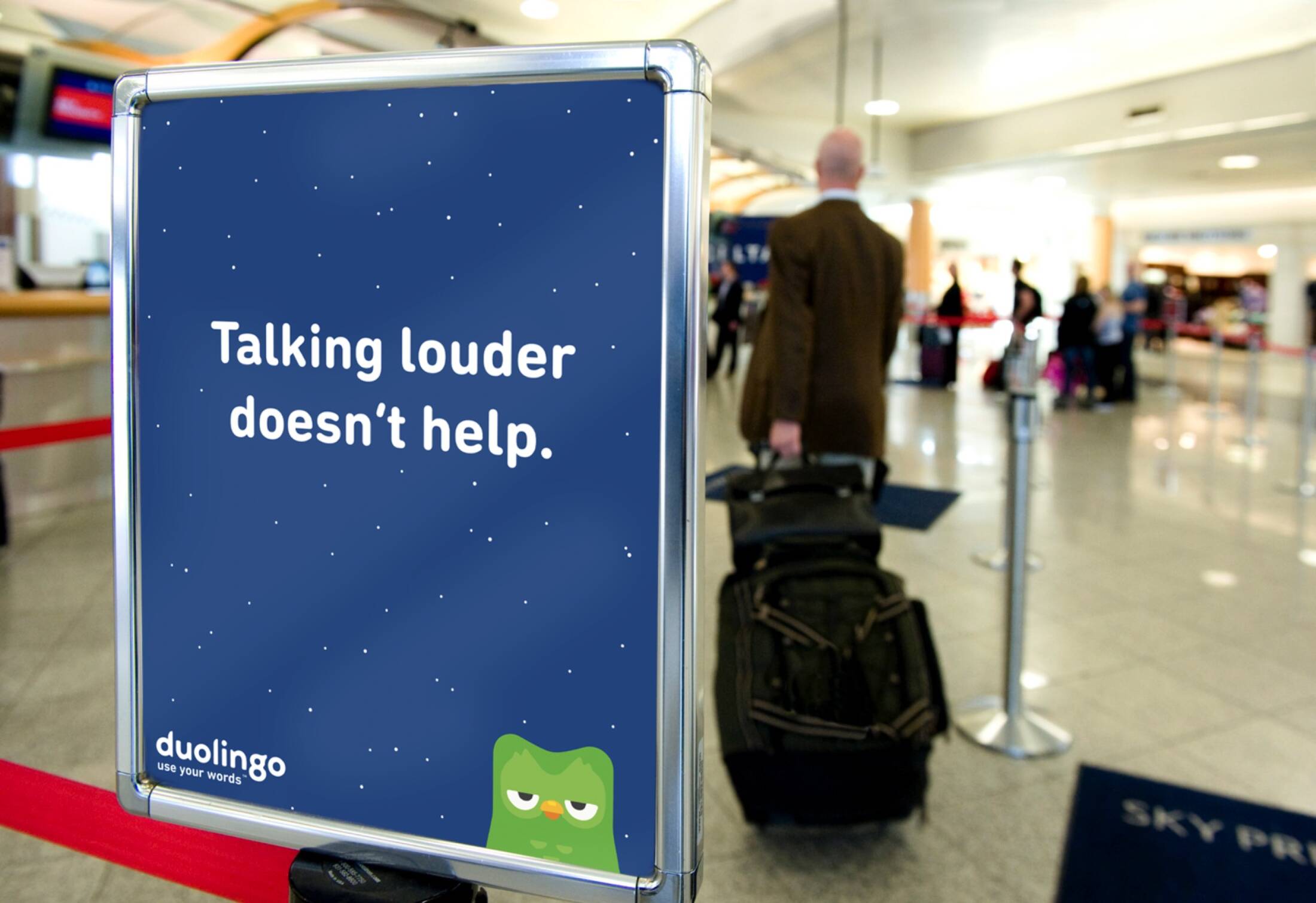
Duolingo brings out its inner sass, and it works! Image via Ads of the World
Monki Empowering Women
In a world where women are still sexualized and critiqued for not being fit, fashion brand Monki is a breath of fresh air. By focusing its brand on being a safe space for women of all sizes and self-expression, Monki successfully tapped into the psychological need for belongingness.
The brand's overall identity represents happiness, fun, and confidence by collaborating with diverse women and using vibrant colors. Add to that its consistency in elaborating its brand story, mission, and values. Finally, by anchoring its branding on social proof, user-generated content featuring customers and influencers attracts potential customers.
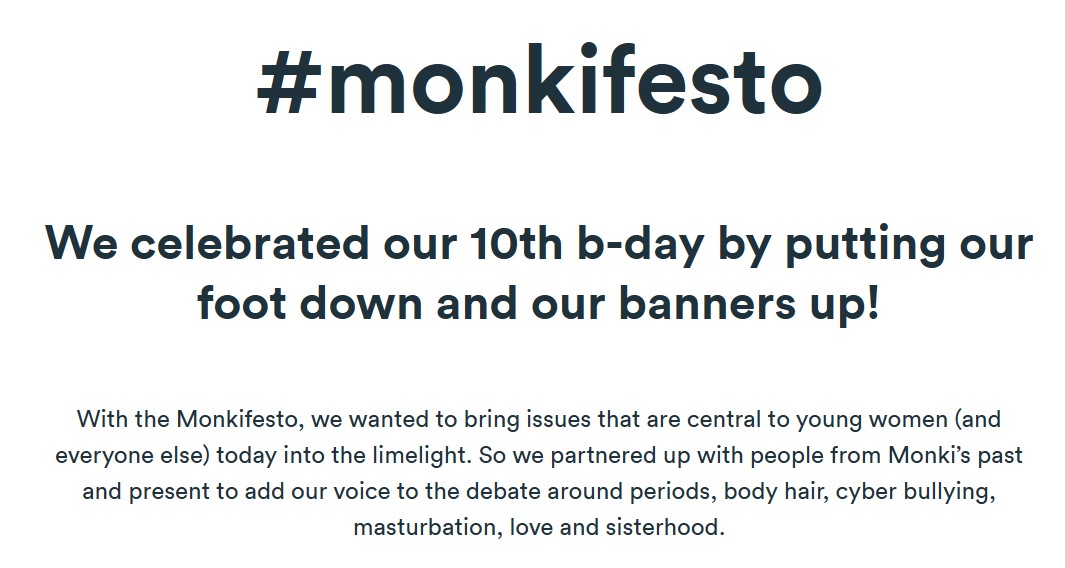
Monki's manifesto via Monki
Wrapping Up
Branding isn't just about making a quick sale—it's about creating direct and subliminal influences to forge a deeper connection with your customers. And you can achieve this through branding psychology.
Not only does branding psychology help you understand your customers, but it also allows you to tap into their emotions and desires. By leveraging the power of psychology, you can create a brand that resonates deeply with your audience, making them feel understood and valued.
Here are some additional pointers you'll need to unleash the power of the psychology of branding:
- Understanding Your Target Market. A clear understanding of your customers allows you to identify their behavioral patterns and preferences and opens up opportunities for creating tailored services or products. The result? You are well on your way to having effective marketing strategies leading to higher conversion rates and sales.
- Consistency. Brand familiarity is easier to build if you are consistent in your brand messaging across all touchpoints. This means ensuring that your visual elements, such as logos, colors, and typography, are cohesive with your brand personality. It helps to speak their language, too, while being persuasive. Again, branding is perceived similarly to how we relate people with their unique sense of style and characteristics.
- Emotional Connection. We are emotional beings moved by stories and values that resonate with us. As marketers, a huge chunk of your brand's foundation relies on the narrative that tells its origin, mission, and vision. People become loyal to your brand once they can see your authenticity and connect to your brand's purpose.
The branding process is challenging as it is forever evolving. As marketers and business owners, you'll need to continuously keep up with the trends, develop your brand perception and brand identity, and hone your brand values, among others. Having a deep well of resources, strong drive, and dedication are also a massive plus in building a strong brand.
Fortunately, you can save yourself from guesswork and branding pitfalls. With a trusty team of brand strategists, you can confidently take your brand to flight!
Jul 10, 2023
